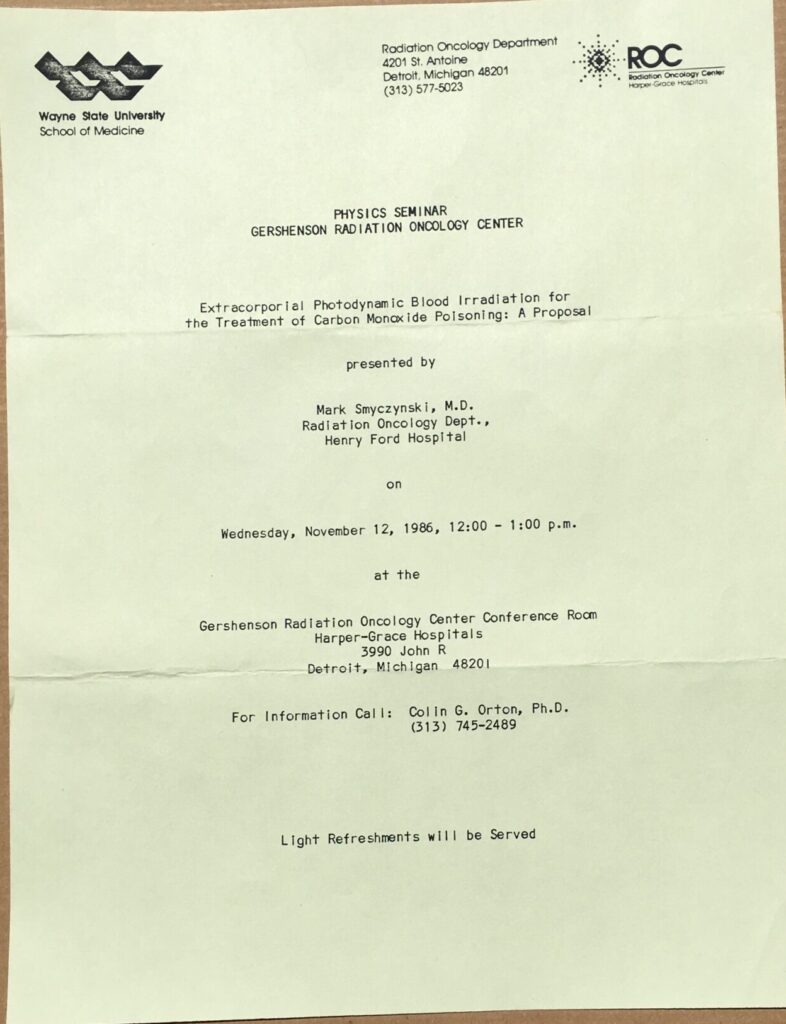Perhaps one of the more interesting aspects of the invention is that the idea upon which it is based is not new. The fundamental concepts behind this technology were first publicly described now over 37 years ago. As a first year radiation oncology resident and during his first semester as a medical physics graduate student at Wayne State University (WSU) in Detroit, Dr. Smyczynski gave a presentation on 12 November 1986 during which he postulated that a novel approach to the treatment of severe carbon monoxide poisoning may indeed be possible.

Over the following year, the various aspects that would allow this idea to move forward from a basic science perspective were explored. By the end of 1987, it became clear that at least two critical barriers stood in the way. First, the light generating technology that was currently available at the time was insufficient in generating enough photons to allow the invention to be successful. And second, the current status, use, and capability of semipermeable membranes was also inadequate.
However, the most beneficial aspect of the research efforts that were accomplished at that time was an in-depth calculation that determined the necessary wattage of light that would make such an invention both meaningful and practical.
Moreover, the first principle is that any “new” therapeutic intervention must be at least as good as, if not better, than the current standard of care. So you should first review the current “standard of care” for carbon monoxide poisoning, which is found on another webpage.
Therefore, for the invention to be as good as, or better, than hyperbaric oxygen therapy, the goal was that the treatment time required for extracorporeal photodynamic blood illumination must be between 1.5 and 2 hours, or between ninety and one hundred twenty minutes.
An editorial regarding the use of photodynamic therapy for the treatment of carbon monoxide poisoning was published over eight years ago on 15 November 2015. In this editorial, the Provisional Patent Application of this invention was cited as Reference No. 17.